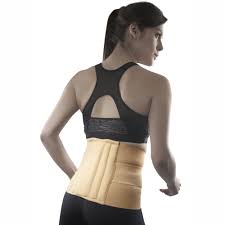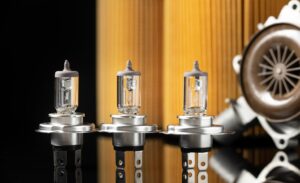
For some spinal problems, lower back support may be an important component of an effective therapeutic strategy. It may also support the spine as it recovers from back surgery. Back support, also known as a lumbosacral orthosis, can be ordered from a doctor or bought over the counter. Without a prescription, nonprescription belts are accessible. To avoid future harm, wearing these devices as directed is crucial. The typical objectives of a Lumbar Sacro belt prescription are to reduce muscular tension and low back discomfort, assist in improving posture to redistribute weight in the spine, provide a favourable healing environment, and enhance function while engaging in daily activities. The fundamental back-bracing mechanisms accomplish these goals.
Lumbar Sacro Belt: What Is It? Who Could Use It?
These belts serve as back supports to alleviate pain in the sacrum and lumbar spine. For every part of the spine, a brace is available. The purpose of lumbosacral braces is to apply pressure to your abdominals, which reduces the weight and strain on the lower back. It provides lumbar spine stabilisation for various diseases, including low back muscular tension, creating the ideal environment for recovery. It is constructed of durable cotton. These belts have laces that allow for simple sizing adjustment and are wrapped around the waist. These come in various sizes for the correct amount of support for various conditions. These belts may also benefit those who have osteoarthritis, spondylitis, and post-operative recovery.
The post-operative recovery process, osteoarthritis, spondylitis, muscular strains, herniated discs, and spinal compression fractures may all benefit from wearing one of these belts. When purchasing this belt, one must consider the following factors: Material: As patients may wear it for extended periods, comfort is crucial. Breathable and lightweight materials may also significantly reduce the risk of skin irritation or lesions. Flexibility: While some belts are hard and restrict mobility, others are soft and flexible. Some belts could come with extra features that some patients find helpful, such as storage compartments and more support. These extra features, however, could make the device quite pricey.
Pros And Cons
- One advantage of employing these belts is that they give back support. Users of these belts claim that more support is provided when alternating between lying, sitting, and standing during episodes of lower back pain; which restricts movement. Too much movement can hinder the body’s healing capacity after a back injury. These belts, which resemble neck braces, restrict motion and range of motion to give the body a chance to heal properly.
- It lessens discomfort as well. Some braces have heating components, while others have massage features. Braces that massage the back can be used to relieve back discomfort. Furthermore, it raises posture. Wearing these belts, users claim, makes it easier to keep a better posture.
- The research is inconclusive, which is one of the drawbacks of using these belts. Skin irritation; Research has not definitively demonstrated that these are useful in treating current back pain or preventing future injuries. Where the belt rubs against the skin, it can lead to blisters, irritation, and rashes, giving the wearer a false sense of security. While braces can help with posture and pain management, they cannot prevent future accidents.
Visit Vissconext to know more about Lumbar belts!







